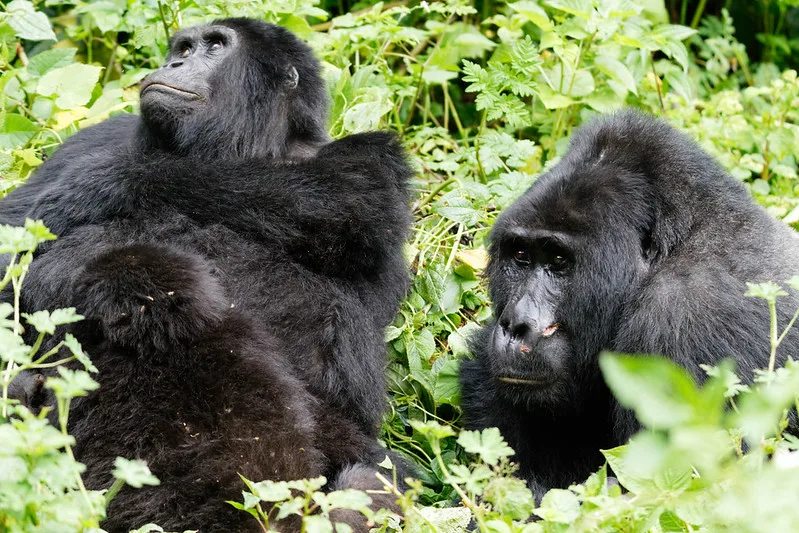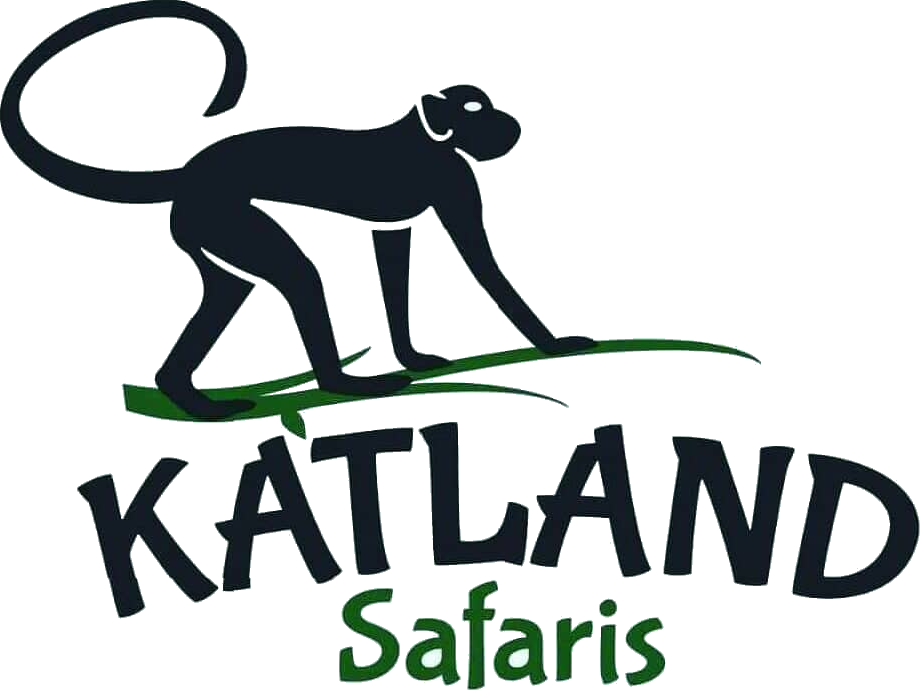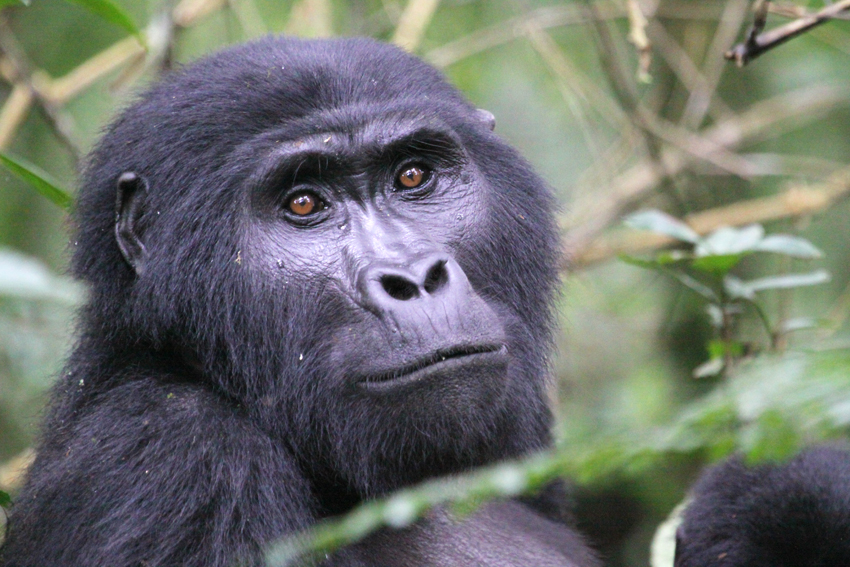How Mountain Gorilla Census Is Done.
Mountain Gorilla Census Methodology: Here is it One approach to ascertain the aim of conservation in the Virunga region is by means of the mountain gorillas census.
According to a census carried out by the Dian Fossey team in the 1980s, there were about three hundred mountain gorillas alive worldwide.
This put the mountain gorillas on the list of global severely endangered species maintained by the International Union for Conservation of Nature (IUCN.). Among the most terrestrial protected primates that call for particular care are mountain gorillas.
Many domestic and international non-profit nature conservation groups became interested in mountain gorilla preservation after their suffering was brought to the public view.
The World Wide Fund for Nature: Diana Fossey Gorilla Fund International, Uganda Wildlife Authority, Rwanda Development Board, Gorilla Doctors, Institut Congolais pour la Conservation de la Nature, Mammalian Ecology and Conservation Unit of the UC Davis Veterinary Genetics Laboratory, Max Planck Institute for Evolutionary Anthropology and others.
Conducted in 2018, the latest resentable gorilla census in Bwindi Impenetrable National Park and Sarambwe Nature Reserve revealed that about 1063 mountain gorillas call the area home. Extreme conservation has brought the mountain gorillas from near extinction.
Great efforts for all stakeholders, cooperation among the three nations housing the mountain gorillas and so much more help to explain this accomplishment in raising the mountain gorilla population.
The number of mountain gorilla families accessible for visitors seeing has skyrocket because to the success of mountain gorilla preservation.
Currently living in Uganda are 19 habituated gorilla families: Oruzogo family, Habinyanja family, Bweza family, Kyagurilo family, Nkuringo family, Christimas, Kahungye family and others. These wind over Mgahinga National park and Bwindi Impenetrable National park.
Currently 13 gorilla families in Rwanda are available for visitors. Among them are group 13, the Amahoro family, the Umubano family, the Hirwa family, and others. Their home is Volcanoes National Park.
D.R. Congo contains six gorilla trekking families, however is difficult to habituate greater numbers of gorilla families because to civil disturbance in this region of the nation. Among them are Munyaga gorilla families, Kabirizi gorilla families, Mapuwa gorilla families, Rugendo gorilla family, Humba gorilla family, and Lulengo gorilla family.
During the mountain gorilla census, data was gathered using a sweep technique using mark-capture and recapture; fecal for genetic analysis was also collected using gorilla status of health analytics.
Counting the created gorilla nests at some time is believed to have produced erroneous findings as some mountain gorillas create many nests for the night.
This is why the appropriate data is gathered using around three days of nest counts. Using the one sweep does not provide the desired outcomes as some lonely gorillas—especially those of male or tiny gorilla families—may be left out.
To ascertain the number of mountain gorillas, a team of mountain gorilla researchers, data collectors, and others spends time counting the nests where the mountain gorillas spend their nights gathering and measuring faecal waste and hair discovered in the nests.
The DNA of a certain gorilla is also found in the faecal matter and compared with others to find its relatives. While most of the population of habituated mountain gorillas in families is known, the statistics on unhabituated gorillas is difficult to compile.
Among the many reasons for the mountain gorilla census were knowledge of the state of conservation, comprehension of the effects of the hazards they encounter, identification of human intervention on the mountain gorillas and their environment, monitoring of their health, and much more.
Part from the mountain gorillas, this census also highlighted the park’s other wild animal population. Among them are elephants, duikers, gigantic forest hogs, buffaloes, waterbucks, bushbucks, wild pigs and others.
Apart from the mountain gorillas, even others primates like golden monkeys were reported black and white colobus, vervet monkeys, olive baboons, chimpanzees, grey-cheeked mangabey to name but a few.
Mountain Gorilla Census conducted under Dian Fossey Time
At 11:30, peanuts separate vegetation to peek at 6m below. He looks for three minutes then settles down to scratch. Still clearly apparent from his right eye incision is a tear-shaped discharge. He advances to within 4m after a faint slur/hoot at 11:08.
He advances to within two meters at 11:15, then sits at 11:17. He delivers a quick hoot/chest beat at 11:22 then moves to 1m away; he knuckle-stands for two minutes before putting his right hand six inches from obs.
At that time, Bill placed his palm over peanuts’ and gave it a few pats because of their poor physical appearance, lack of family or friend s, and seeming inclination in social interaction across species borders.
The silverback sat down beside him, but he had no idea what that intended comfort meant to a gorilla. Peanut stayed in arm’s reach for the next 10 minutes, idly grooming himself and sometimes looking at Bill.
He would turn sheepishly away with any prolonged eye contact, then glance up and about while he scratched his enormous chin, generating a sound like a fork scratching thick boot leather.
Whatever peanuts may have been thinking, a flash of vivid red from the under wing of a passing Ruwenzori turaco startled him into action. Moving several distances, he sank himself into a dense cluster of greenery and spent much of the next hour ravenously eating a lot of rich thistle and celery.
Bill felt both fortunate and depressed when peanuts eventually hobbled over the undergrowth: privileged to have felt the strong tie of intimate contact started by peanuts, but sad that he was the only such touch that peanuts may have for months or perhaps years.
Enough gorillas had previously been seen to make one value their highly sociable nature. In a polygamous community, the lone guy may represent an evolutionary in-between; however, peanuts was a sad figure nonetheless.
Including the research and periphery group into the previous tally from Karisimbi, Bill came to fifty-eight gorillas overall. He had to go beyond the Karisoke contact zone, set up a number of base camps, and carry out multiday surveys of the surviving wild gorillas if he was to learn any more.
Following the route north from Karisoke over an open woodland dominated by the twisted forms of enormous Hagenia trees, Bill and Rwelekana pushed their heavy loads.
Uprooted trunks scattered the grassy glades, drawing attention to the danger of developing at such unstable angles under heavy loads of mosses and epiphytes. Many of these trees in death have met the axe of the karisoke woodcutters.
Before leaving the wide saddle to ascend through thick stands of five foot-tall strings nettles in the center of group 4’s range, the track passed the drenched border of the upper meadow.
Rising up into more difficult terrain, Bill and Rwelekana left the nettles behind. Stately slopes of Mt Visoke are interrupted every few hundred meters by steeply eroded valleys.
From little canyons to simple clefts, they were grouped as bonds in the simplified Swahili spoken during karisoke. Within the region of group 4, most were assigned names muti kufa (dead tree), ndege (bird), and kulala ( Sleep) Ravines.
Then followed the more evocatively called bonde ya chui (leopard), bonde ya kujiua (suicide), bonde mkubwa (great canyon), and the realm of unhabituated gorillas beyond.
Having spent eight years at karisoke, Rwelekana understood this terrain and guided Bill exactly to the finest crossing point for every ravine.
Past the leopard cave on the edge of Bonde Mkubwa at 10270 feet. The Grand Canyon got its name from its boxlike form and pure walls devoid of many transit places.
Leaving our bags, we ascended a rocky ridge on the western side of the canyon; the ground was slick and the gnarled gigantic health demanded that Bill keep his six-foot-two frame in a continually stooping stance. Still, the crest gave a great perspective into the canyon bottom a few hundred meters below, where Rwelekana’s trained eyes hunt for any recent gorilla movement.
Walking methodically around each volcano’s slopes and ravines, the primary approach for a gorilla census is to search for path markers. Even lone silverbacks leave a trail of bent and broken plants as they negotiate the dense herbaceous flora in which they locate most of their favorite meal species. While larger groups could flatten a broader track, the passing of more people makes a deeper and longer lasting impression.
Walking up a ridge and searching for telltale cuts in the herbaceous mat colonizing the exposed side and bottom of the ravines below may help one locate these paths most easily.
Rwelekana peered into Grand Canyon and quickly located what he was looking for: ikonjia ya ingagi. a gorilla path. Even Bill’s less trained eyes could see the black line of flattened plants bending through the thicket maybe eighty meters below.
He was not ready for the silverback that soon arose at the front of that line, however. Not only was our first day out blessed with new track, but the gorillas themselves were right once obvious.
As I descend, a silverback passes the bottom of the canyon followed by two adults and a juvenile/young adult chest beat at 15:30. At least four more stay on S side and are heading back up toward me as these four ascend distant side.
Playing rear guard, a mature girl with pursed lips climbs out on a big Hagenia; from there she chest beats and hits trunk often. follows “purser” in the tree at 15:52 a YA with noticeable wart, then a little child at 15:55. Slave trunk and chest beats both. A second Silverback smashes through on close side.
All follow; Purser is on her way down at 13:03 as Silverback smashes through group and into canyon. I stay above and count as they cross to the far slope, climbing out on a limb to get a better look. I count eight more between 13:08 and 13:15.
Added to the 4 already crossed this produces a group makeup of 15:2 silverbacks, 7 adults, 1 young adult, and 2 youngsters. About eighty meters up the N side of the canyon, they disappear from view and keep only occasional chest beats.
guidelines for Gorilla Trekking
If you find you have a communicative illness, volunteer to remain behind as mountain gorillas are prone to these diseases.
When you come across the mountain gorillas, never harass them. Though their environment is calm, they too experience emotional fluctuations.
When among the mountain gorillas, avoid surrounding them since they could feel attacked.
Approach the mountain gorillas with a space of around eight meters. This helps to prevent any illness from possibly reaching the mountain gorillas.
Take pictures of the mountain gorillas without using flash. They are always afraid of fresh events happening in their neighborhood.
Eat and smoke away from the mountain gorillas at least at least 300 meters away.
You could not be sure what this would produce.
Should you feel like sneezing, do it away from the mountain gorillas to prevent infecting them with any diseases.
Never trash the forest as mountain gorillas need it as their food source. Should you discard any trash, it might change the character of the forest serving as the mountain gorilla food source.
It is unclean and any diseases might be given to the mountain gorillas by spitting on the foliage, so it is outlawed.
Because of the huddles you must pass to reach the mountain gorillas, age restriction for gorilla treking is 15 years and above.
When among the hills gorillas are not noisy. This makes them afraid and can drive them into hiding.
Once you find the mountain gorillas, just one hour is permitted with them.
This allows them the time to continue with their daily routines.
Get in touch to learn more about the methodology of the Mountain Gorilla Census.


